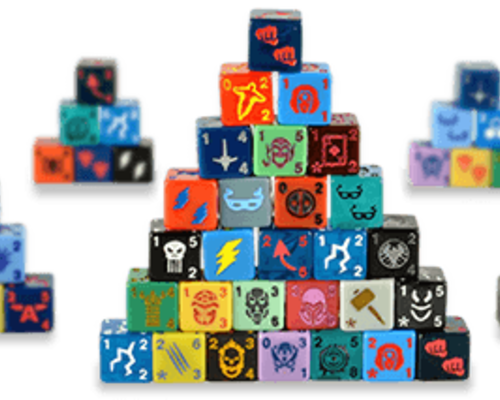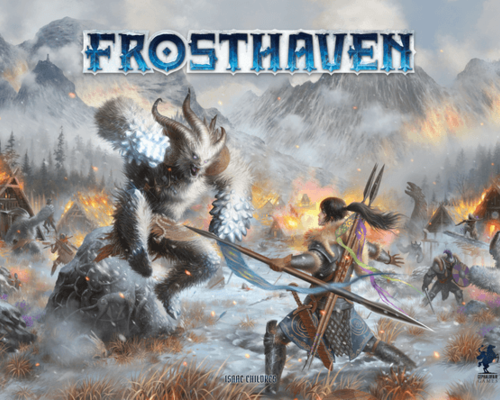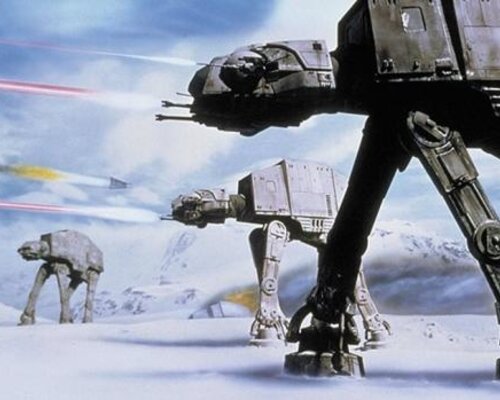From time to time, we here at Mission: Fun & Games like to use our platform to shine a light on important aspects of the board game hobby that often go under discussed. While we love to spend our time here talking about fun subjects like board game history, how to get into a new part of the hobby, or retelling our favourite stories from the table, sometimes it behooves us to pause, pull up a chair, and get introspective. This week, Tim explores the dilemma we face as board game consumers when it comes to balancing our hobby with our responsibility to our environment.
This is the first of a two part series. Part 2 can be found here.
With recent reports that climate change will cause irreversible and unavoidable changes to our ecosystem, it is up to all of us as consumers to contribute where we can to help mitigate the consequences of climate change. Even the smallest of efforts can make a noticeable difference, and only require us to make small sacrifices.
In spite of our political, social, or economic differences, anyone reading this blog undoubtedly has at least one thing in common: a passion for board games. Board games and RPGs (Role Playing Games) of all kinds are more popular than ever. Hundreds, if not thousands, of new titles are released every month, with countless gamers clamoring to keep informed of all the new releases and hidden gems. We have touched on this subject before, but one aspect of board gaming is often left unacknowledged:
Waste.
I am guilty of this myself. A couple years ago, a popular card and dice game called Dice Masters was my passion. Every few months I would eagerly await the release of a new gravity feed, filled with hundreds of cards and plastic dice. Gingerly tearing into a gravity feed and rooting through dozens of packs to find that little red stripe indicating that I had found a Super Rare was thrilling and exciting. It didn’t matter that I ended up with dozens of duplicate cards and dice that I couldn’t use, as long as I got those few that I desperately needed to collect either for the sake of it or to add to a team that I would use to play with. Needless to say, after a few years of this, my fatigue for the game set in fast. Keeping up with constant consecutive releases became too much, and I also quickly found myself overwhelmed with trying to organize and store my collection. So I made the difficult choice to just stop collecting, and let go of a game that I had come to care about.
Now, a few years later, the huge plastic containers that I used to keep my collection in are sitting completely untouched on my game shelf. In retrospect, with a few years to postulate, I now recognize that I was participating in an unsustainable economic model designed to manipulate me into chasing that high for rare finds. I was spending money on a game designed to keep me buying in small quantities, little bits at a time. “If I just buy a few more booster packs maybe I’ll get that one card I want or find that rare that I can trade for something else!” Gamblers will undoubtedly recognize this pattern of behaviour; even in our store we refer to it as the “booster pack lottery”.
Dice Masters is certainly not the only game guilty of this, but it does differ in one regard compared to most collectible card games: dice. Magic: The Gathering players will often lament how many cards are being added to their ever-growing collection, but storing 5000 cards is much easier and more compact than storing 5000 cards and their matching dice! Of course, since a player only needs, on average, 5 dice per character for Dice Masters (as each die can usually be used for up to 4 variants of a particular character), it becomes very reasonable to expect someone to, after a time, just start tossing the extra dice into the garbage. I have seen this happen with card games after tournaments or draft events. Players rifling through hundreds of booster packs to find the few useful cards they need, only to toss the rest into the trash or recycle.
Anyone who has taken the time to research or familiarize themselves with supply chain economics might already be aware of the problem. Dice are made using a non-renewable and extremely finite resource, one that takes massive amounts of energy to retrieve. Before a die even gets processed into its usable form, its base components have traveled more distance than many people do in their lifetimes. From their original source, these components are transported to refineries, then to a plastics manufacturing plant (most likely overseas), from there to a plastic distribution facility, then to the factory that actually makes the dice, before they must be shipped to yet another, different facility responsible for packaging and assembling the two card-and-dice booster packs (the cards having their own separate production pipeline) that customers actually buy. Now completed, the dice must still make their way to the distribution plant for the boosters, get shipped back overseas to multiple distribution warehouses, which then have to disseminate them to multiple retail stores, before finally reaching the end user.
Every step in this cycle contributes to a greater ecological footprint, and it would be easier to justify if the item in question were to be used until the end of its lifespan. Ultimately though, most of these dice that I’ve collected, possessing absolutely no resale value, will eventually end up in a landfill, having never been used even once for their intended purpose. All the energy and resources (both human and commodity) used to get those dice in my hands were literally for nothing. And in a macabre fashion, the raw resources used to produce those dice end up back in the earth where they came from, albeit in altered form and having irrevocably altered our ecosystem. Our home.
This kind of waste is part of every single purchase we make, absolutely. There is literally nothing on this planet that we buy that doesn’t have some kind of ecological footprint. But we have to be careful not to sacrifice long term sustainability for short term economic gain. Keeping the global supply chain strong and sustainable has been the status quo, production at all costs and for the least cost possible. But by doing so we have denied ourselves the opportunity to innovate. We exploit cheap wages and dubious labour standards for our own gain in order to increase profit and reduce costs. This seems logical in the short term, but we really have no way of determining how different things would be if we focused more on producing less, and producing locally. Of course I understand that supply chain economics keeps people employed, and creates jobs for all of us folk. Even my own job relies almost entirely on products produced using finite resources overseas with very high ecological footprints. But us gamers are clever, resourceful, out of the box thinkers and we have a unique opportunity to make a tangible impact. Small steps, such as packaging games in smaller boxes, using alternative materials such as plastics made of cellulose to produce components, or using recycled material for game boxes can all go a long way towards reducing board game related waste.
Now, us board gamers enjoy playing games because they are analog. Digital media certainly has a much lower ecological footprint, but often lacks the social aspect that draws people to board games in the first place. So is there a way to strike a balance between ecological responsibility and our obsession with collection? I believe so, and the solution to that may be the very thing that many of us analog gamers strive to leave behind... Technology.





